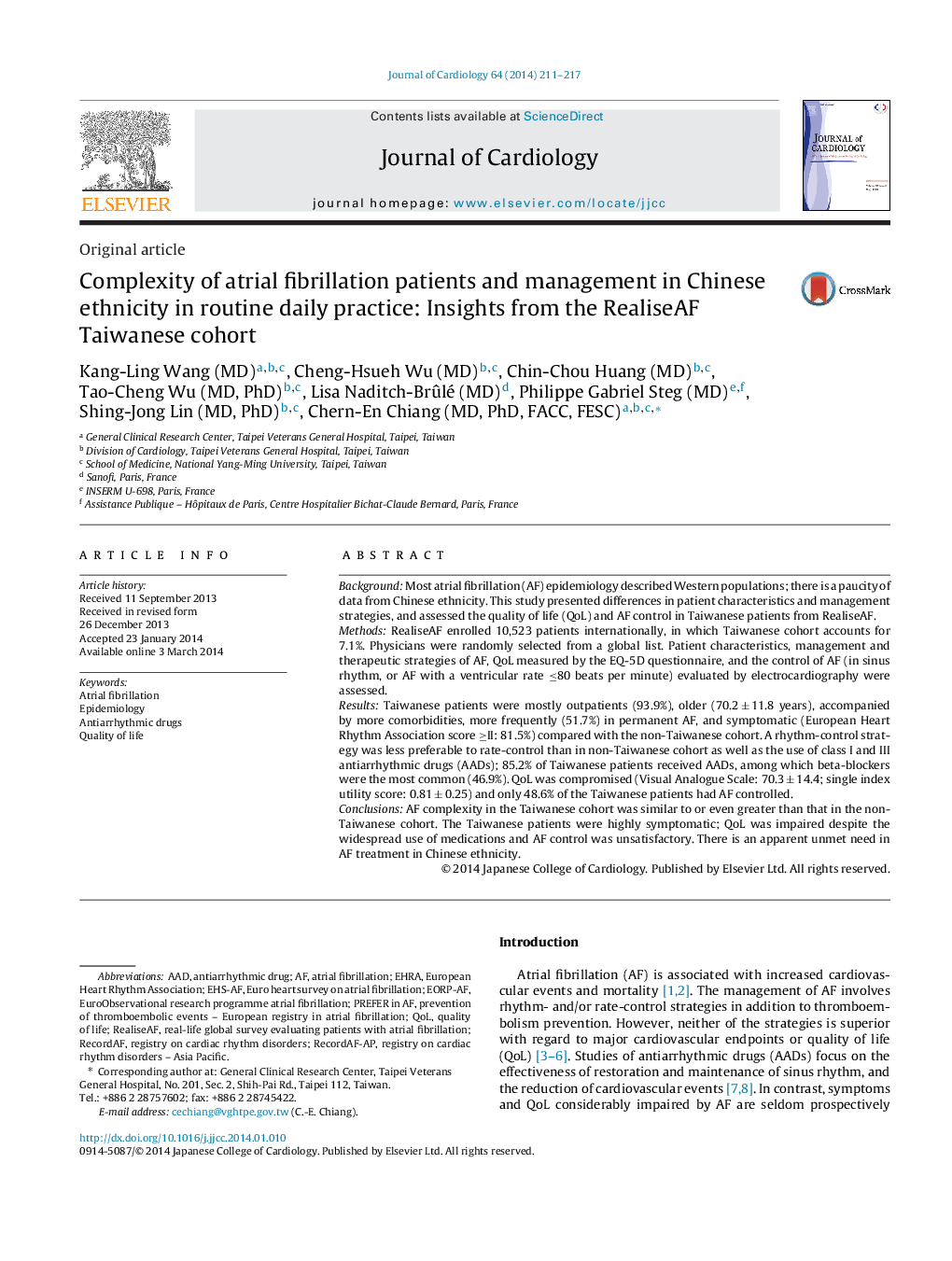| Article ID | Journal | Published Year | Pages | File Type |
|---|---|---|---|---|
| 5984095 | Journal of Cardiology | 2014 | 7 Pages |
BackgroundMost atrial fibrillation (AF) epidemiology described Western populations; there is a paucity of data from Chinese ethnicity. This study presented differences in patient characteristics and management strategies, and assessed the quality of life (QoL) and AF control in Taiwanese patients from RealiseAF.MethodsRealiseAF enrolled 10,523 patients internationally, in which Taiwanese cohort accounts for 7.1%. Physicians were randomly selected from a global list. Patient characteristics, management and therapeutic strategies of AF, QoL measured by the EQ-5D questionnaire, and the control of AF (in sinus rhythm, or AF with a ventricular rate â¤80 beats per minute) evaluated by electrocardiography were assessed.ResultsTaiwanese patients were mostly outpatients (93.9%), older (70.2 ± 11.8 years), accompanied by more comorbidities, more frequently (51.7%) in permanent AF, and symptomatic (European Heart Rhythm Association score â¥II: 81.5%) compared with the non-Taiwanese cohort. A rhythm-control strategy was less preferable to rate-control than in non-Taiwanese cohort as well as the use of class I and III antiarrhythmic drugs (AADs); 85.2% of Taiwanese patients received AADs, among which beta-blockers were the most common (46.9%). QoL was compromised (Visual Analogue Scale: 70.3 ± 14.4; single index utility score: 0.81 ± 0.25) and only 48.6% of the Taiwanese patients had AF controlled.ConclusionsAF complexity in the Taiwanese cohort was similar to or even greater than that in the non-Taiwanese cohort. The Taiwanese patients were highly symptomatic; QoL was impaired despite the widespread use of medications and AF control was unsatisfactory. There is an apparent unmet need in AF treatment in Chinese ethnicity.
